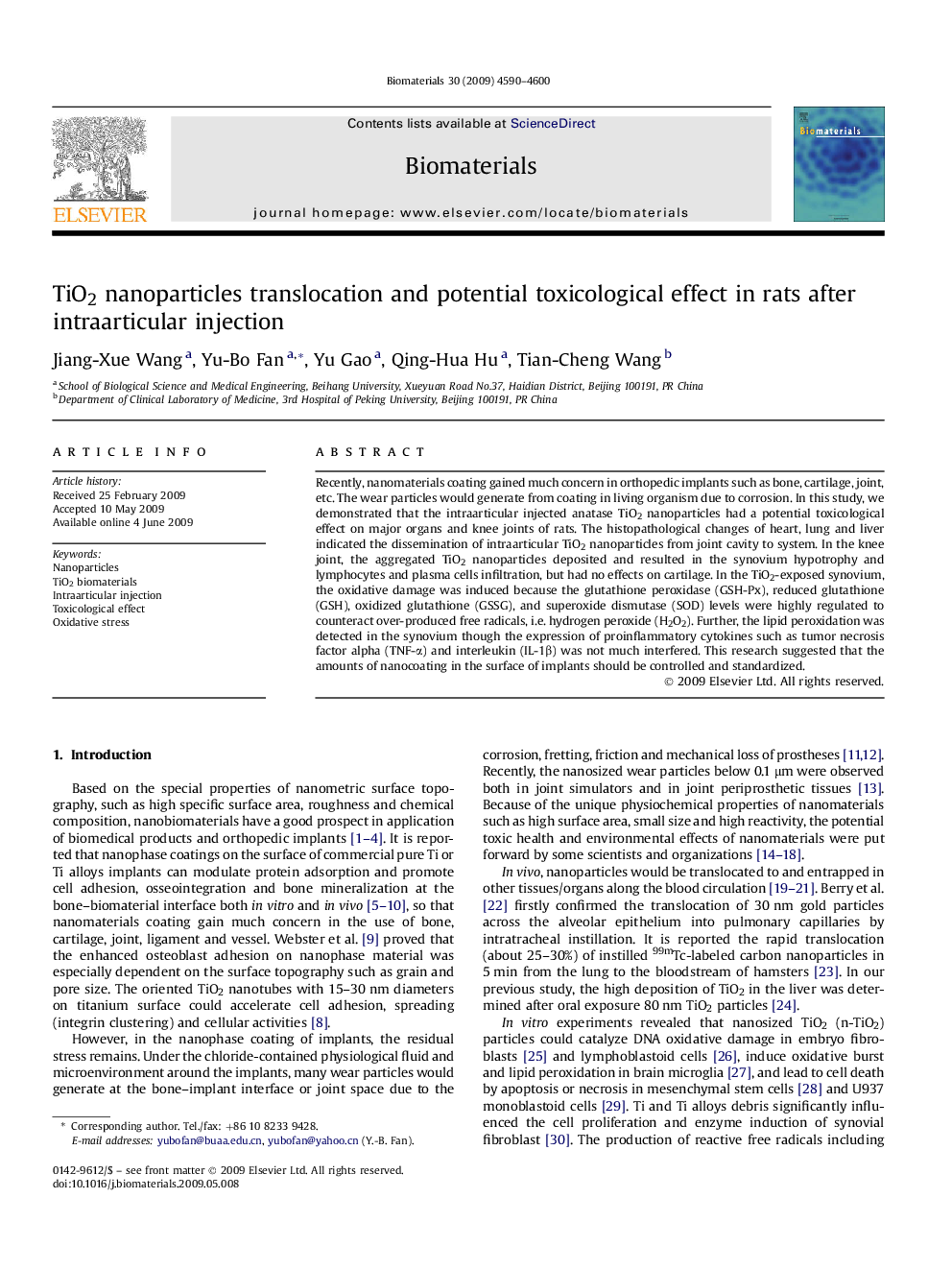| Article ID | Journal | Published Year | Pages | File Type |
|---|---|---|---|---|
| 10230063 | Biomaterials | 2009 | 11 Pages |
Abstract
Recently, nanomaterials coating gained much concern in orthopedic implants such as bone, cartilage, joint, etc. The wear particles would generate from coating in living organism due to corrosion. In this study, we demonstrated that the intraarticular injected anatase TiO2 nanoparticles had a potential toxicological effect on major organs and knee joints of rats. The histopathological changes of heart, lung and liver indicated the dissemination of intraarticular TiO2 nanoparticles from joint cavity to system. In the knee joint, the aggregated TiO2 nanoparticles deposited and resulted in the synovium hypotrophy and lymphocytes and plasma cells infiltration, but had no effects on cartilage. In the TiO2-exposed synovium, the oxidative damage was induced because the glutathione peroxidase (GSH-Px), reduced glutathione (GSH), oxidized glutathione (GSSG), and superoxide dismutase (SOD) levels were highly regulated to counteract over-produced free radicals, i.e. hydrogen peroxide (H2O2). Further, the lipid peroxidation was detected in the synovium though the expression of proinflammatory cytokines such as tumor necrosis factor alpha (TNF-α) and interleukin (IL-1β) was not much interfered. This research suggested that the amounts of nanocoating in the surface of implants should be controlled and standardized.
Related Topics
Physical Sciences and Engineering
Chemical Engineering
Bioengineering
Authors
Jiang-Xue Wang, Yu-Bo Fan, Yu Gao, Qing-Hua Hu, Tian-Cheng Wang,
